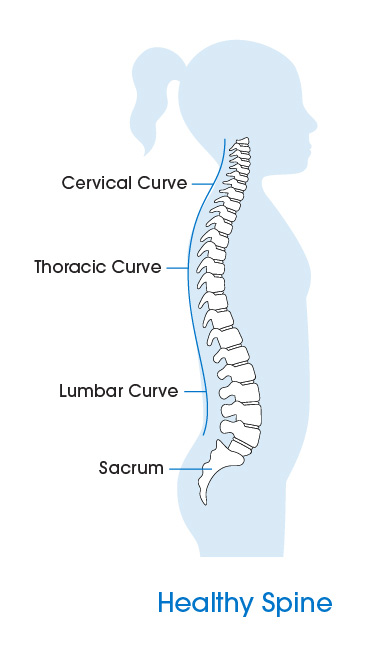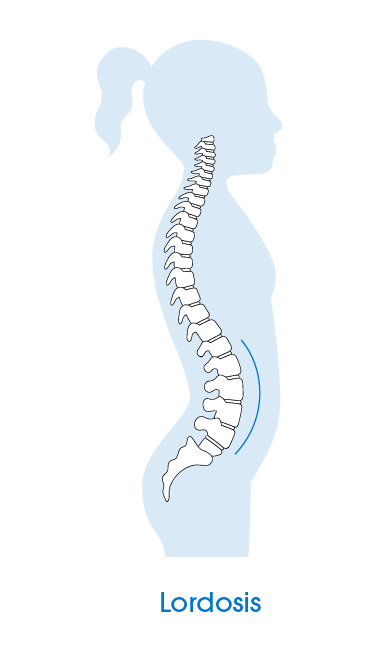

The spine is made up of small, stacked bones called vertebrae separated by soft, shock-absorbing spinal discs. A healthy spine has three gentle, natural curves which act as everyday shock absorbers. Kids and teens with spinal curve conditions have curves of the spine that are larger than or opposite of the natural spinal curvatures. These include lordosis (more inward curve, swayback), kyphosis (more forward curve, rounded back) and scoliosis (sideways curve).




